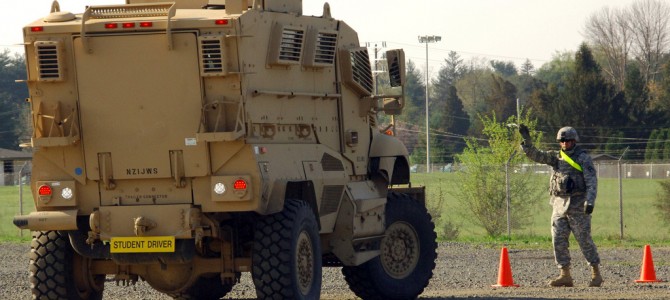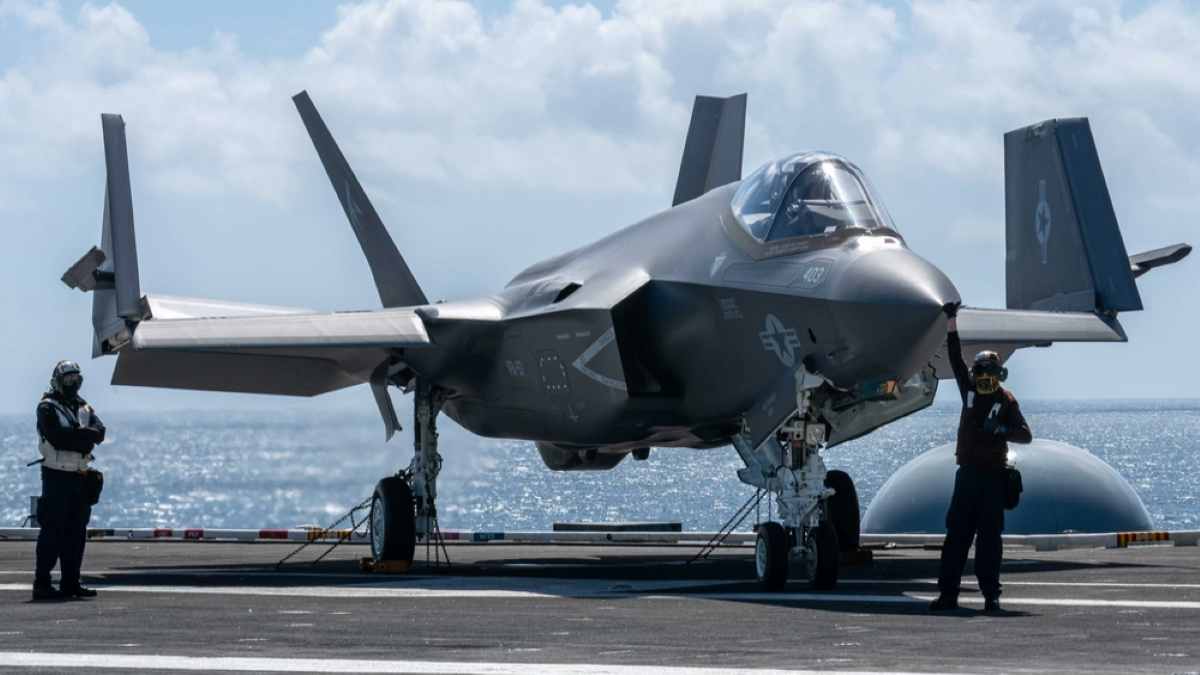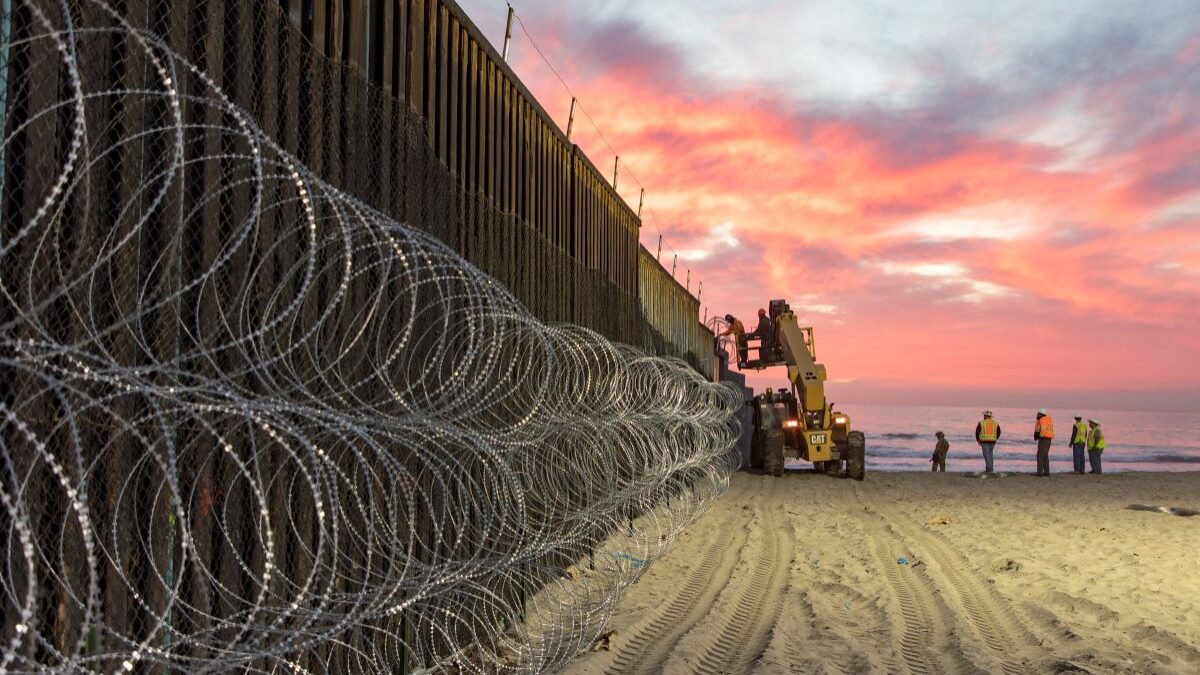
As the riots and unrest in Ferguson recede, the Obama administration has embarked on a new adventure in Iraq, this time against the Islamic State (ISIS), hitting the terrorist enclave in Iraq with a handful of airstrikes in recent weeks. Although President Obama admitted “we don’t have a strategy yet” for confronting ISIS, the United States nevertheless has begun recruiting a broader coalition of allies to carry out attacks against the group in Syria and widen operations against it in Iraq.
Meanwhile, many Americans have come away from the riots in Ferguson, Missouri deeply disturbed by the militarization of local police departments, not just in that town but nationwide. Images of cops in armored vehicles training military-grade rifles on unarmed protestors and firing tear gas into crowds struck many as repugnant and alarming—scenes better suited to mass protests in Egypt, Ukraine, or Turkey.
So what does our response to ISIS have to do with the police response to Ferguson? Last week, Peter Suderman of Reason argued the militarized police response in Ferguson directly results from America’s response to the terrorist attacks of 9/11. The federal programs that supplied the armored vehicles, body armor, tear gas, rubber bullets, and other military gear in Ferguson were meant to help cops fight terror at the local level.
It’s a bit much to say, as Suderman does, that far from fighting terror, the police in Ferguson “have helped create it,” but it’s certainly true that over the past decade local police departments nationwide have been outfitted with an unprecedented array of military gear and training. Never before have so many cops had so much military hardware as they do now, most of it supplied by the federal government.
The American Street War
Arming cops with heavier firepower began decades ago with the War on Drugs, but Suderman rightly notes that the attacks of 9/11, the War on Terror, and the 2003 invasion of Iraq accelerated the trend by many orders of magnitude:
A federal program began transferring large military grade equipment from the Pentagon to local law enforcement—giving away almost $450 million worth of equipment originally intended for conducting war last year alone. Since 2002, a separate program run by the Department of Homeland Security has provided $35 billion in grants to law enforcement around the country, funding the purchase of tactical gear, storm-trooper-style armor, and mine-resistant vehicles.
Radley Balko has had some fun chronicling the distribution of Mine-Resistant Ambush Protected armored personnel vehicles, or MRAPs, to small towns like Dundee, Mich., population 3,600. But it’s not just small towns. Last year, Ohio State University acquired its very own a 19-ton MRAP. It was just one of more than 100 colleges whose campus police are getting military-grade hardware from the Department of Defense.
The idea is that local cops must be prepared to disrupt terrorist plots and therefore should be trained and equipped accordingly. In the wake of 9/11, when Americans were in shock and afraid there might be more attacks on the way, this reasoning kind of made sense. But as the years wore on, it became clear that giving military gear to cops just meant more local police departments would form SWAT teams—it’s estimated that 80 percent of towns with 25,000 to 50,000 residents now have SWAT teams, up from just 26 percent in 1984—and that they would be more likely to call in the local SWAT team to, say, serve an arrest warrant (never mind that SWAT teams were originally conceived as a special response unit to hostage or active shooter scenarios). The pretense that any of this has anything to do with actual law enforcement has all but disappeared: the federal program doling out the military equipment doesn’t seem to distinguish between areas with high crime rates and those that are relatively safe.
Terrorism Versus Crime
It’s hard to understand this kind of nonchalant police militarization unless you consider that it springs from a specific approach to terrorism and domestic security developed after 9/11 and employed by the last two administrations. Put simply, this approach treats terrorists as criminals and acts of terror as crimes. Law enforcement, not warfare, has become the framework for America’s response to terrorism at home and abroad. Hence, the National Security Agency’s (NSA’s) domestic spying program, the security theater of the Transportation Security Administration, the militarization of local police, and so on.
It wasn’t always this way. In the immediate aftermath of 9/11, our leaders did not contemplate their response as an exercise in law enforcement, or that terrorism was merely a criminal-justice issue. President George W. Bush vowed the United States would “make no distinction between the terrorists who committed these acts and those who harbor them.” Accordingly, the United States delivered an ultimatum to the Taliban: hand over Osama bin Laden or face immediate attack. The Bush administration also gave an ultimatum to Pakistan, which had a long history of accommodating the Taliban. Two days after the attacks, Richard Armitage, the deputy secretary of state, handed Pakistan’s intelligence chief a list of seven demands, which included breaking ties with the Taliban, stopping al-Qaeda operations on the Pakistani border, and granting American forces access to Pakistani bases and airspace. According to former Pakistan President Pervez Musharraf, the demands came with a promise that if his country did not comply, the United States would “bomb it back to the Stone Age.”
Here was an entirely different response to terrorism that placed the responsibility for dealing with terrorists on the terror groups’ host regimes: if you do not take care of this problem, we will make war—not only on the terrorists, but also on you, Musharraf, or you, Ayatollah Ali Khamenei, and topple your regime. According this approach, any leader wishing to preserve his regime is co-opted to fight terrorist groups operating inside his country and dismantle any terrorist networks—even ones the regime itself may have helped establish. Fighting terrorism then becomes a matter of law enforcement for the host country but remains, as it should, a matter of diplomacy and warfare for the United States.
Angelo Codevilla has written at length about this approach to fighting terrorism as the only way to end America’s “permanent war footing” and “restore the respect and geopolitical balance on which peace depends.”
Ending ‘permanent war footing,’ ever so essential for any nation’s sustainability, requires being honest about who threatens us, and putting them out of action while not bothering others. The Bush and Obama Administrations, each for its own reasons, preferred to pretend that our problem consisted of bands of rogues extraneous to any authorities. Both Administrations tried and failed to identify and police such rogues in alien lands while so wrapping America in ‘security measures’ as to make it almost unrecognizable. That way lies permanent war with foreigners and strife amongst ourselves.
Police Abroad, Military At Home
Unfortunately, the Bush administration never really followed through on its promise to hold regimes accountable, or else. Instead, it gradually adopted a law-enforcement strategy for containing al-Qaeda abroad while militarizing law enforcement at home—an approach the Obama administration has maintained.
But for a democracy, holding regimes accountable for terrorism is an infinitely better policy than attempting to police terrorists ourselves because it doesn’t require the creation of a massive security and domestic surveillance apparatus. The problem with the creation of such an apparatus, designed to disrupt terror plots beforehand and ferret out potential terrorists among us, is that sooner or later it will be turned on the very civilian population it was meant to protect. Between the domestic spying programs of the NSA and the militarization of police departments nationwide, we are now witnessing this process begin to play out here in the United States
If we choose to fight terrorists at home and try to police them abroad, instead of bringing the fight to them and holding their host regimes accountable, we should expect more of the kind of domestic militarization we’ve lately seen in Ferguson. And if the Obama administration’s failure to devise a strategic response to ISIS continues to manifest itself in equivocal and intermittent airstrikes that stop short of destroying the fledgling terrorist state, then we should not be surprised to see boots on the ground—not in Syria or Iraq, but here at home.








